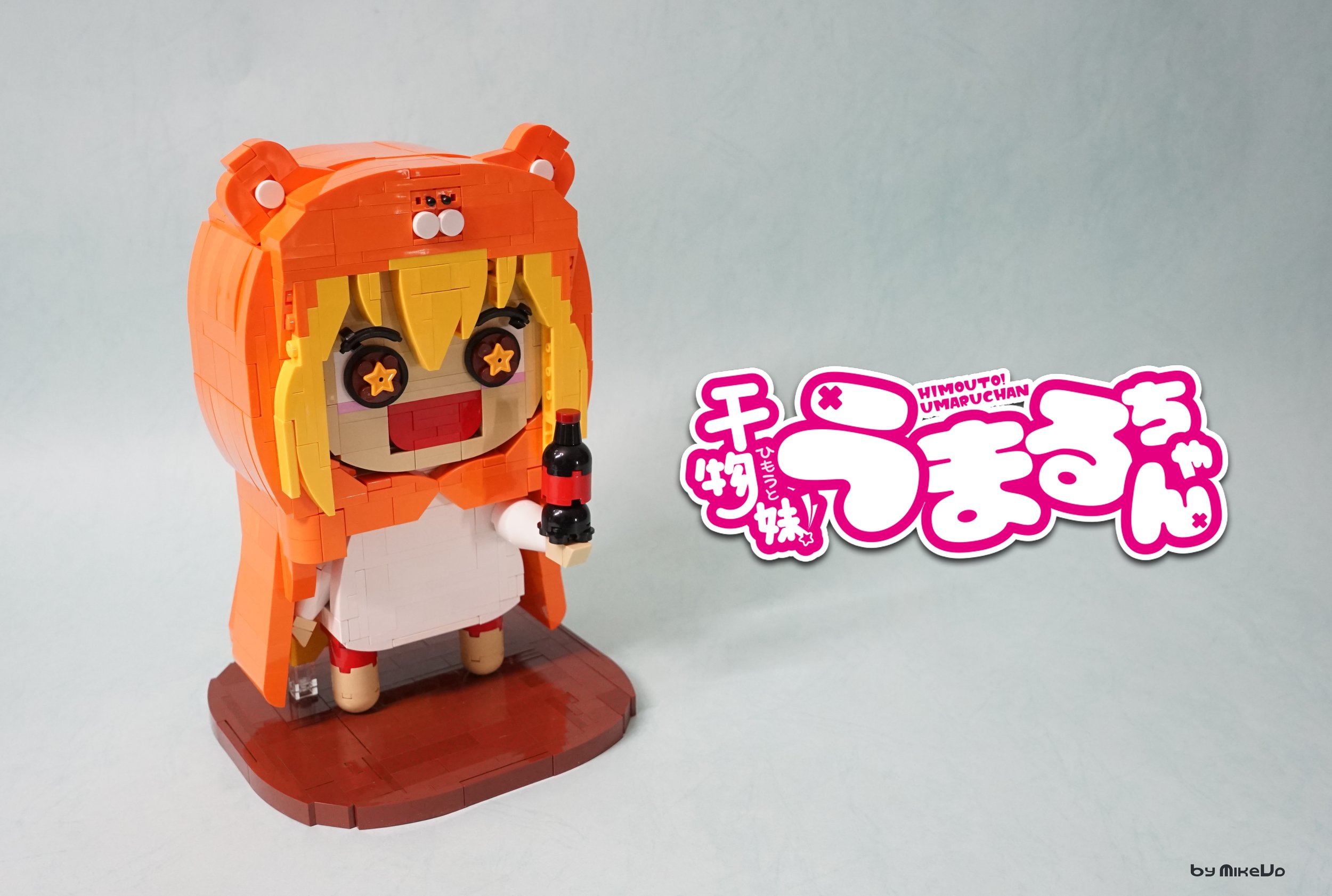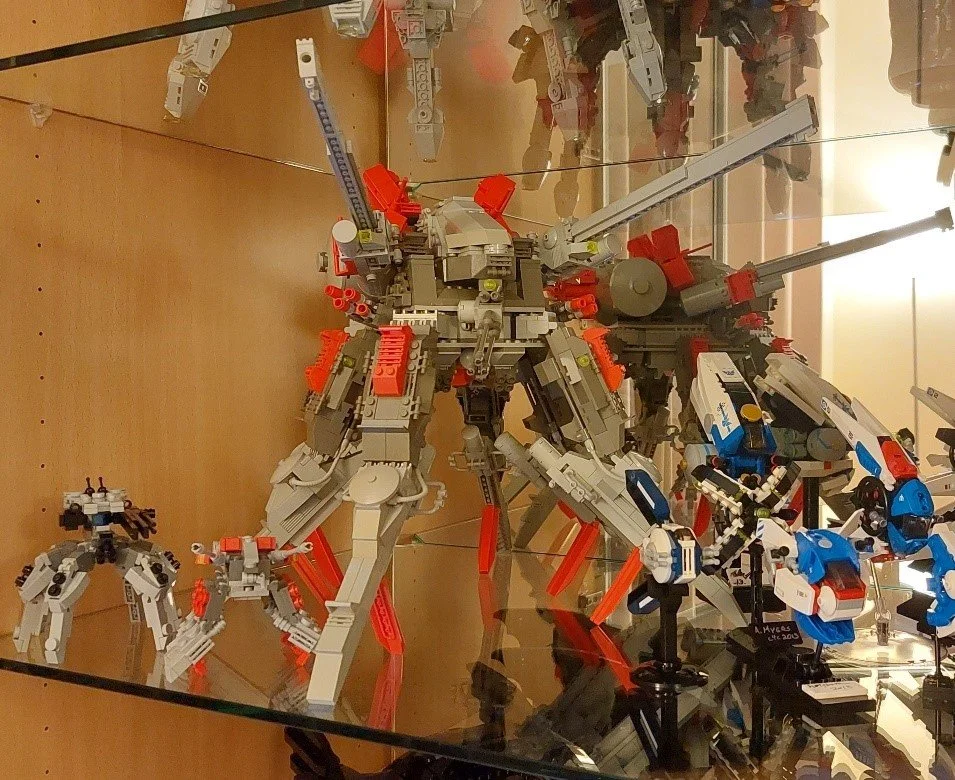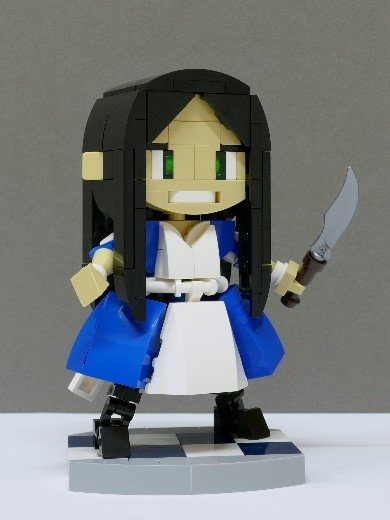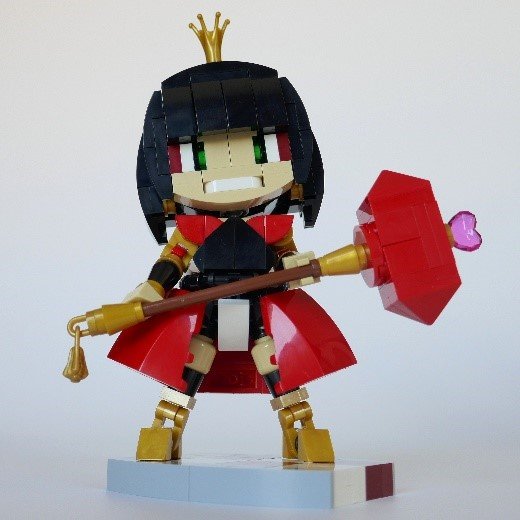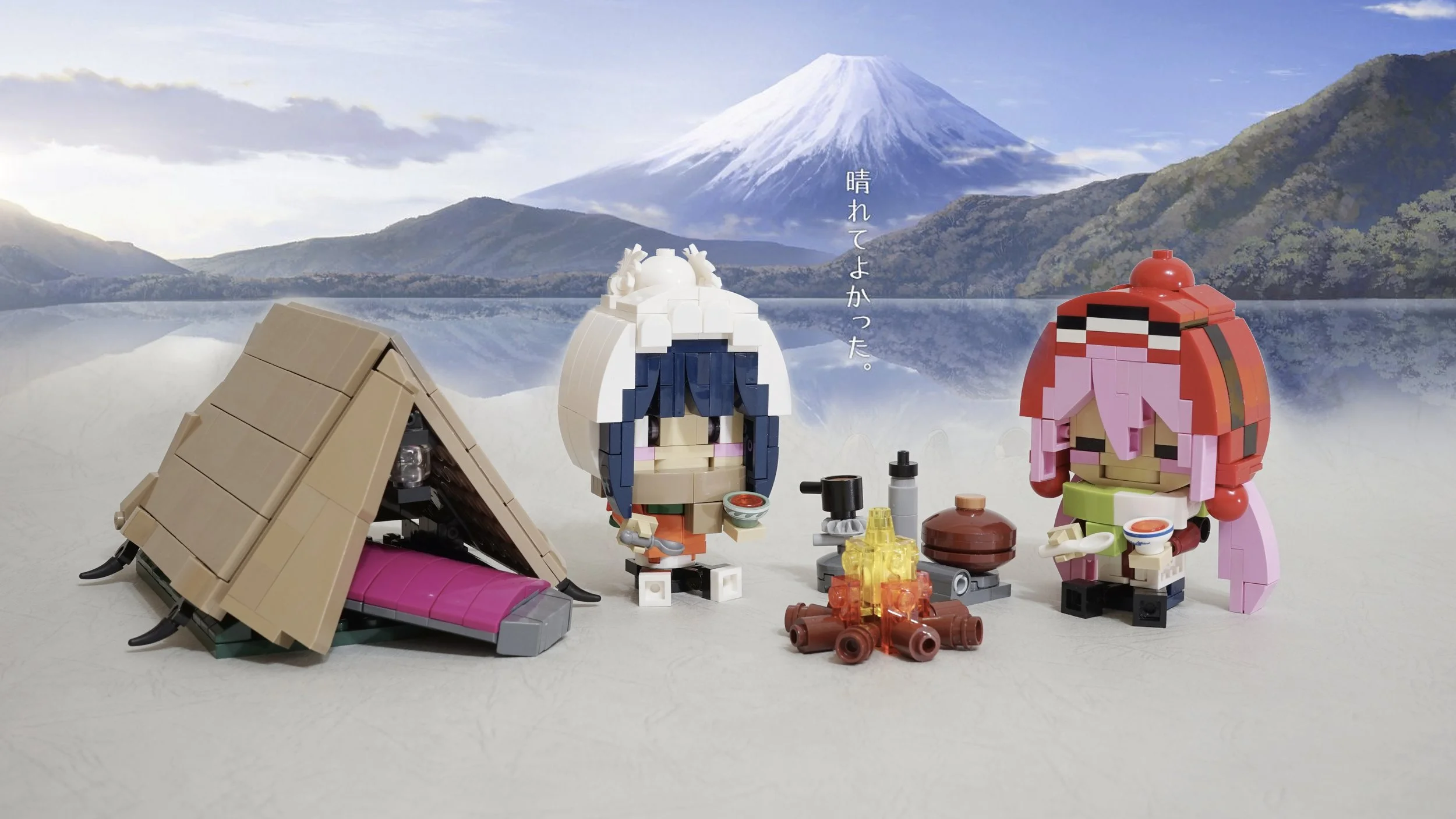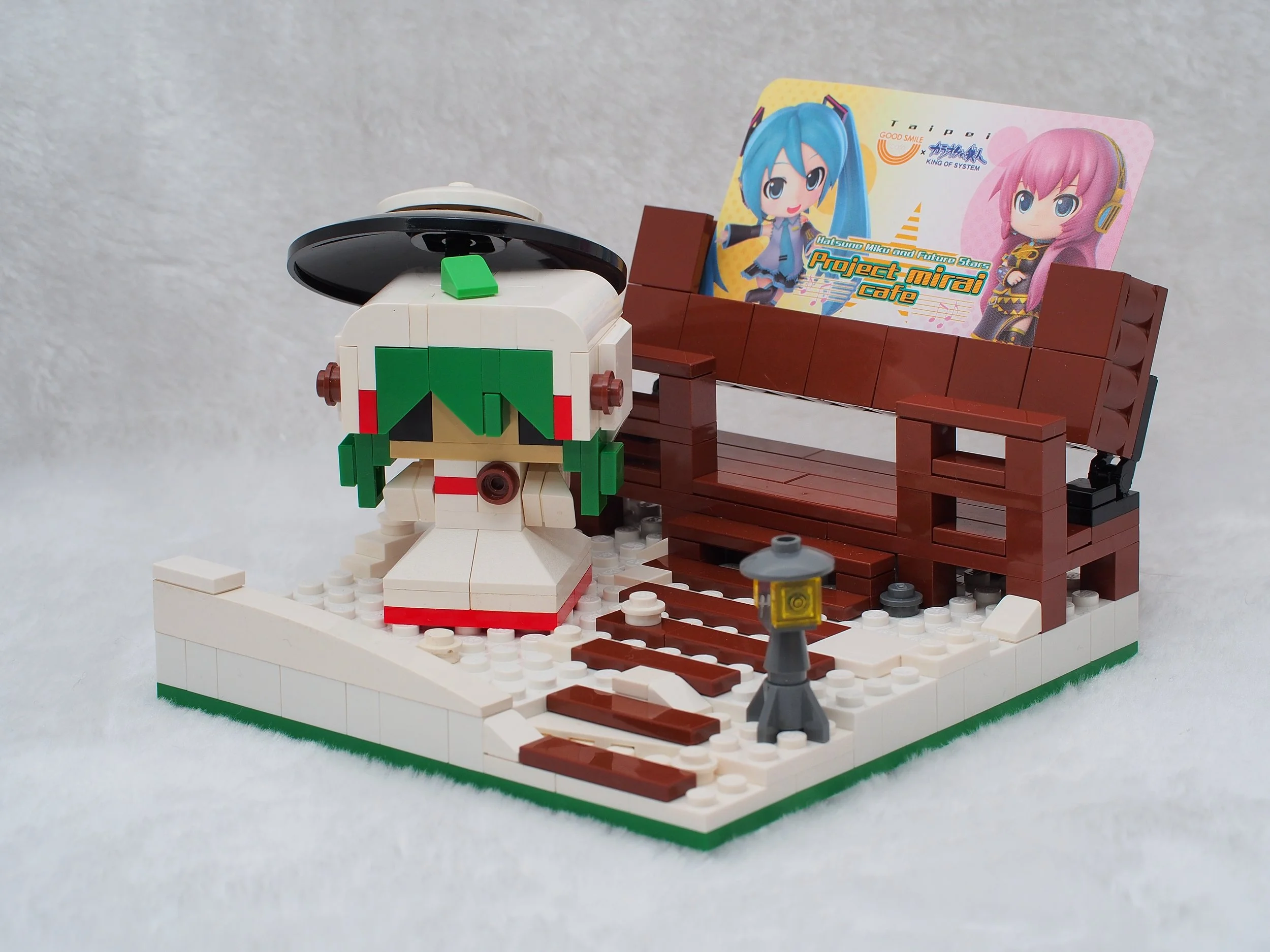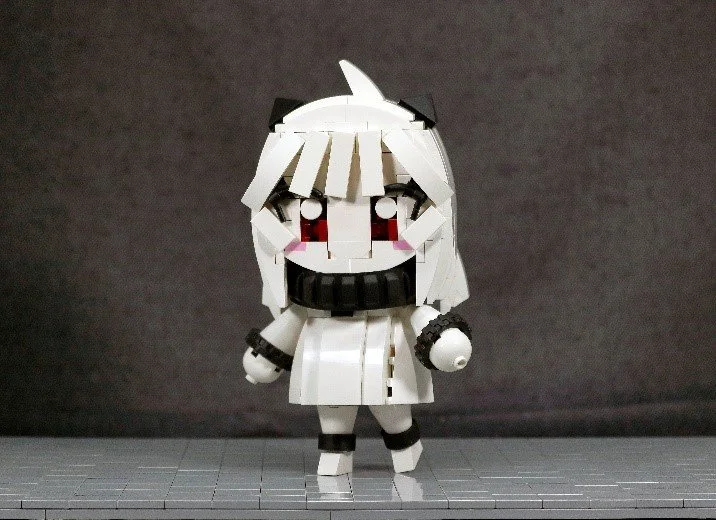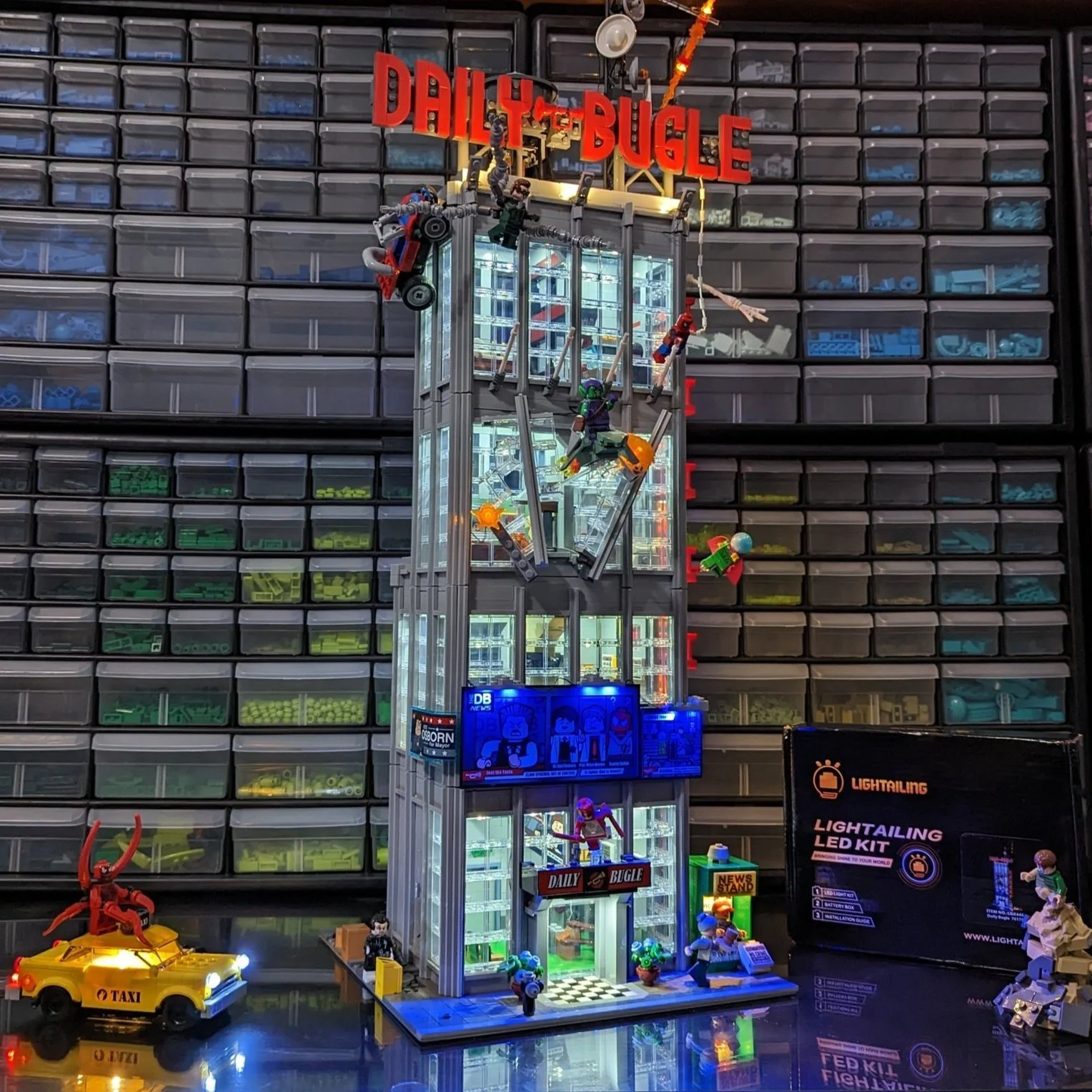"Gettin’ Chibi Wit It": A Chat with Javier Soravilla and Mike Dung
/Javier Soravilla (LegoWyrm on Flickr) is well-known in the AFOL community as a prolific MOC builder of anime-inspired chibi characters. A couple of months back, his build of Rebecca from the anime series Cyberpunk: Edgerunners really caught my eye. I thought to myself “Man, what a cool figure to have on a display shelf!” It turns out that I was not alone in that sentiment. There was so much interest in Rebecca that Javier kindly created building instructions for her a week later and posted them on his Flickr account.
With Javier’s instructions as my starting point, I decided to try building some “original” chibi characters of my own. I chose to build the “LycoReco girls”, Chisato and Takina from the recent anime series Lycoris Recoil… But what I didn’t realize at the time was that the “O.G.” who developed this signature 4-wide chibi face style had already built these exact characters! (Yikes! Already going head-to-head with the master on my very first chibi MOC 😬.) Before we take a side-by-side look at how my builds compared to those built by master chibi-builder Mike Dung, let’s first take a step back and discuss what “chibi” building is all about.
The Chibi Style
For those unfamiliar with the term “chibi”, it is a form of stylized character drawing that originates in Japan. The term derives from the verb “chibiru” (禿びる), which means “to wear out and become shorter” (like the tip of something). The term is widely used to describe a specific style of caricature drawing, where characters are drawn with oversized heads and small chubby bodies. Proportionally, chibi characters can typically range between two-to-four heads tall. The usual objective of creating these caricatures is to make cute (kawaii; かわいい) versions of normally proportioned characters - perhaps at the direction of marketing folks to sell more merchandise. Folks have also applied this chibi aesthetic to vehicles as well, making their proportions much smaller (and cuter) for a standard minifigure to drive/fly.
"Himōto! Umaru-chan" - an anime character that is chibi by original design, and one of my favorite figures Built by Mike Dung
We have highlighted quite a few different styles of chibi figure builds on BrickNerd in the past; The “CubeDudes” that were developed by Angus MacLane would certainly be defined as chibi, as well as some of the trophies handed out at BrickCon, and of course other builds inspired by the official LEGO BrickHeadz design standard… I guess you could even say that BrickNerd’s own Nerdly mascot has taken chibi to the extreme, by being “all brains” and no body at all.
LEGO Chibi Figure Building
When it comes to the LEGO chibi building styles inspired by Japanese pop culture (anime/manga), three artists’ names immediately come to mind: Moko, Mike Dung (MikeVD), and Javier Soravilla (LegoWyrm).
The earliest anime-focused chibi builds in the LEGO building community are attributed to Moko (Instagram). Seeing Moko’s builds is what inspired Mike (Instagram) to try building chibi MOC’s of his own. Mike further-and-further refined his own chibi building style until he finally arrived at his standard 4-wide face/head combo in 2015, which many people continue to use today. As Javier put it, “Mike's chibi style is kind of a sweet middle point: Compact, not too part intensive, yet it always has room for some cool tricks. Love it!” In turn, Javier was inspired by both Moko’s chibi figures and Mike’s 4-wide standard, and came up with his own signature “power-stance” body standard with semi-posable arms and legs (although slightly taller than Mike’s, his figures still fall within the 2-to-4 heads tall range of being a “chibi” figure).
They say that to understand someone, you should start by “walking a mile in their shoes.” … and to understand a LEGO builder, a good place to start is by building what they build; the objective is not to simply make copies of their builds, but to understand their experiences, challenges, thought processes, and techniques. To that end, I set out to create some chibi figures of my own (pictures below), and these are some of the things that I learned along the way:
Even though chibi figures appear to all be built in the same way, especially their faces, each one is truly a unique MOC unto itself. Different parts are always required to achieve their unique looks (hair, arm and leg poses, clothing, etc.), which in the end makes each build unique.
To echo Kyle Keller’s guest article about building convention trophies, “With builds that use less than 100 pieces on average, each part winds up doing significantly more work in the final build.” I found that each part was not only important to the structural integrity of the figure but also to the aesthetics. The building of the heads requires a ton of advanced SNOT techniques in such a small package.
Every part that you see in a chibi figure MOC has likely been swapped out for a different part at least once. Be prepared to swap parts over-and-over-and-over to get the looks correct. For simple things like the 1x2 area for the mouth, you might try three or four different types (tiles, plates... even roller skates…)
Their cuteness is contagious! I really only set out to build one figure… and then I ended up building three more!
After building these chibi figures of my own, I reached out to both Javier and Mike to get their thoughts on how it all started, the chibi figure standards that they’ve both adopted (and continue to refine), and their building inspirations.
An Interview with Javier Soravilla and Mike Dung
Japan Brickfest 2019: Mike is second from left, and Javier is at bottom right.
Ted Andes: Hello, Javier and Mike! I am working on deep-dive article for BrickNerd on chibi figure building. Since you are both such prolific builders of them, and trusted stewards of the chibi style, I thought I’d reach out to you both for an interview on the subject.
Javier Soravilla: Yesssss! Bring me on! Being featured in BrickNerd is a great honor! Thanks! (^_^)
Mike Dung: Thanks for sending me this email! I am traveling in Japan right now, but there would be some time I could write when commuting. In fact, I have built some recent chibis and have not uploaded them on Flickr yet, which I hope to do after getting back home to Taiwan.
Ted: Awesome! Thank you both. Being that chibi figures are mainly a Japanese anime/manga phenomenon, I might also refer to Mike as the "senpai" (senior) and Javier as the "kohai" (junior) in the article, if that works for you?
Javier: Hahaha! Mike-sensei (teacher) would be even more appropriate, even if Mike gets flustered about it. :-)
Mike: Haha. I don’t mind being called that, Javier, but as you know the real senpai is definitely Moko-san. He was my inspiration to start building chibi figures, and I continue to be inspired by his works!
Ted: Fair enough. Proper usage of Japanese honorifics aside, we are honored to have you both sharing your building experiences with us today. Let’s get started!
About the Builders
Ted: So Mike is living in Taiwan, but how about you Javier? Can you tell us where you are from and a little bit about yourself?
Javier: I am Spanish, and I’ve been living in Barcelona for all my life. I work as an engineer and my passion for LEGO began in my early childhood, back in the eighties. I design my MOCs digitally first, using LEGO Digital Designer (LDD) as my software of choice.
It is not hard to guess, but I am an enthusiastic fan of anime and manga. I fell down the rabbit hole of anime when the colored version of Akira was first published in Spain, back when the Euro was not yet a thing. My all-time favorite anime series is Hyouka, and my undisputed number one manga is Tsutomu Nihei’s Blame! Naturally, my specialty is building anime-inspired characters. My most popular MOC is probably The Princess of Hearts.
Javier’s “Princess of Hearts”
Ted: How long have you both been building with LEGO? Did either of you ever have a "dark age" (a pause from building LEGO)?
Javier: I have been building LEGO since I was a child, back in the eighties and, ironically, I was more into Technic than into System. Even more ironically, my love for bricks did not begin with LEGO, but with TENTE, a discontinued Spanish brand of interlocking bricks that was very popular in my childhood years.
Ted: Ah yes! TENTE sets actually made it here to the USA for a time in the 1970s. I remember having a few of their transport ship sets myself growing up.
Javier: … But then a long dark age came and lasted twenty years! My dark ages ended abruptly in 2012 when on a whim my parents gave me a LEGO Tie Fighter set as a present. That was the spark. Then, my discovery of BrickLink fueled that fire. Funnily, my LEGO obsession did not first start through collecting LEGO sets but from discovering amazing MOCs online. Multipede mechs by legendary builder Mladen Pejic have the honor to be my very first builds after my dark age ended.
Mladen’s incredible Mako multipede mech is Javier’s very first MOC ever.
Ted: How about you, Mike? How long have you been building with LEGO?
Mike: For me, I started playing LEGO from elementary school, maybe seven or eight years old. After entering junior high school I stopped playing LEGO because personal computers became popular and I was attracted to online games. I came back to LEGO building in 2010, but I just bought sets at first. Three years passed and then I found Moko’s MOCs. That is what inspired me to try building my first LEGO figure MOCs of my own. Since my figures are related to Japanese anime or games, I usually share my works on Twitter as the community seems more prevalent there.
Ted: Obviously, chibi figure building became a passion for both of you along the way. At this point, how many chibi figures have you both made so far? Do you have any recent photos with them all displayed together?
Javier: As of today, about 125 chibi figures in multiple scales. Not bad!
Javier’s Chibi figures - How many characters can you recognize?
Mike: After briefly counting, I think I’ve built 226 chibis now! After seeing Javier’s photos, I think I need to group mine in a well arranged format too! Hopefully I can do that once I get back home from my travels.
Mike’s Chibi figures - how many Characters can you recongnize?
Ted: Out of all of these chibi figures you have both built, which are your personal favorites?
Javier: Come on! That is a hard question! If I let fanboy admiration mingle into my decision, however, then it is a no-brainer: American McGee’s Alice tied in first place with the Queen of Hearts. If you are familiar with my Flickr Photostream, you probably know that I’m a sucker for anything Alice in Wonderland-related… Choosing runners-up is a tougher matter, as I love all my chibis.
Ted: I have to say that your build of Miku as a Spanish flamenco dancer is still my all-time favorite from you, Javier. There is something about that dynamic pose, the colors, and her stylized hair swaying like a toreador’s cape. “Olé!”
Ted: How about you, Mike? Which are your personal favorites?
Mike: At this moment, my remade Touhou series are my favorite chibis. With all the new parts that have come out since I originally built them, I could capture more details in their character design and give them more dynamic body poses! (pics on Instagram)
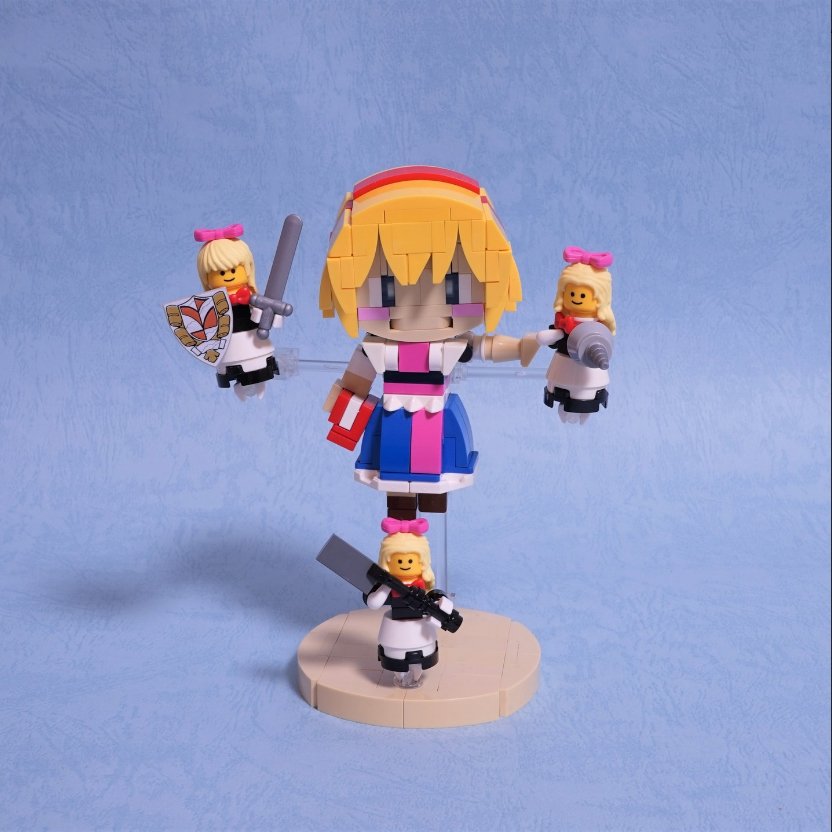
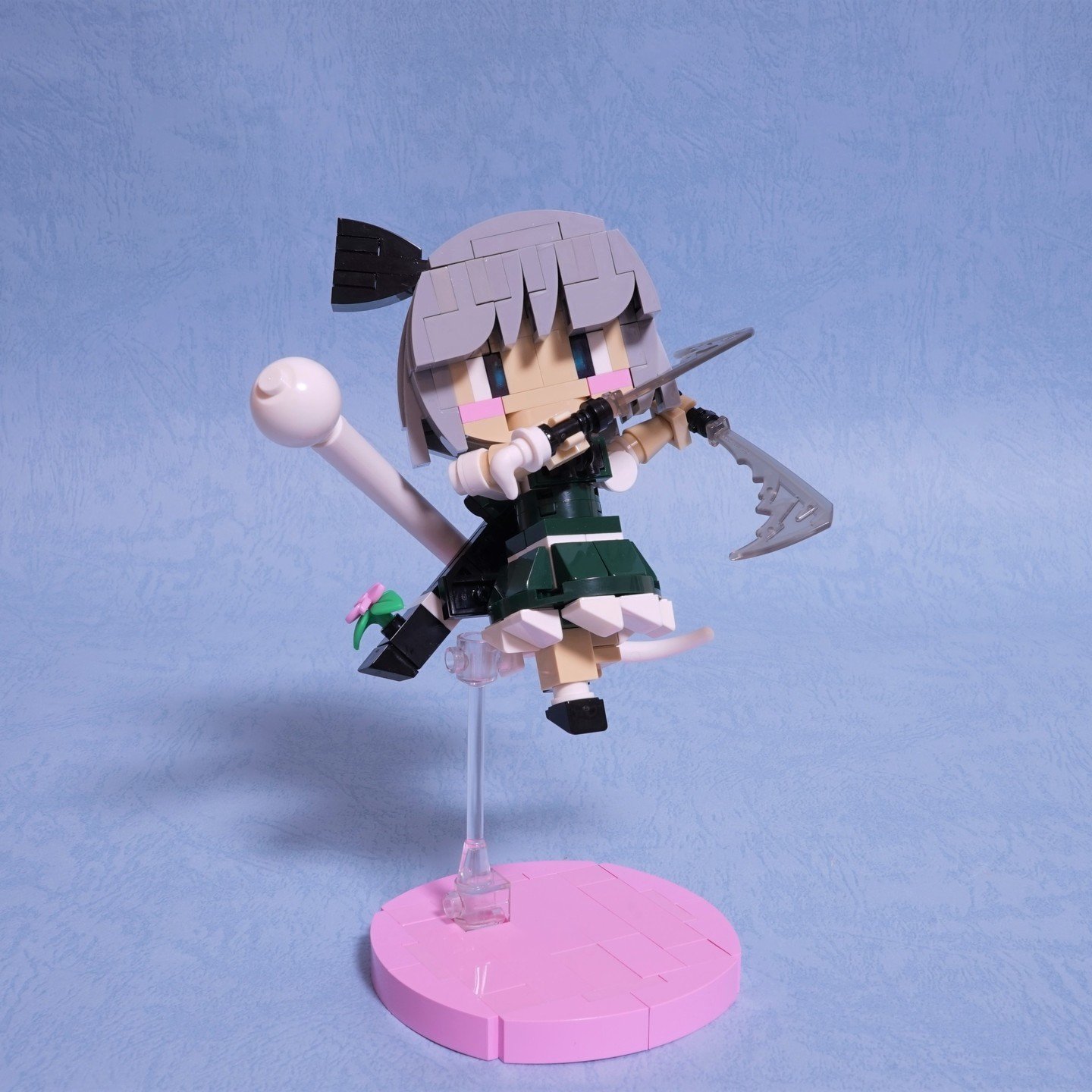
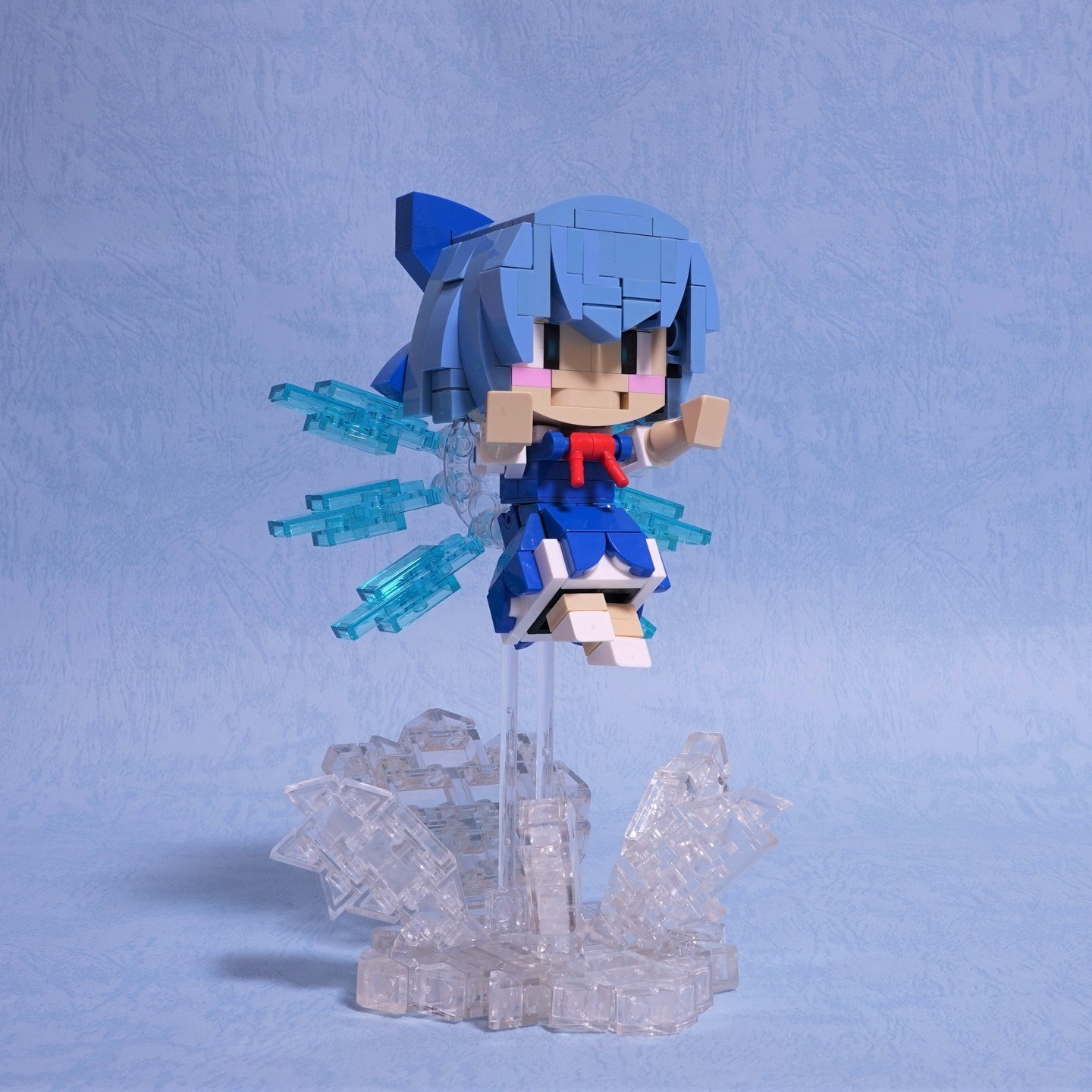
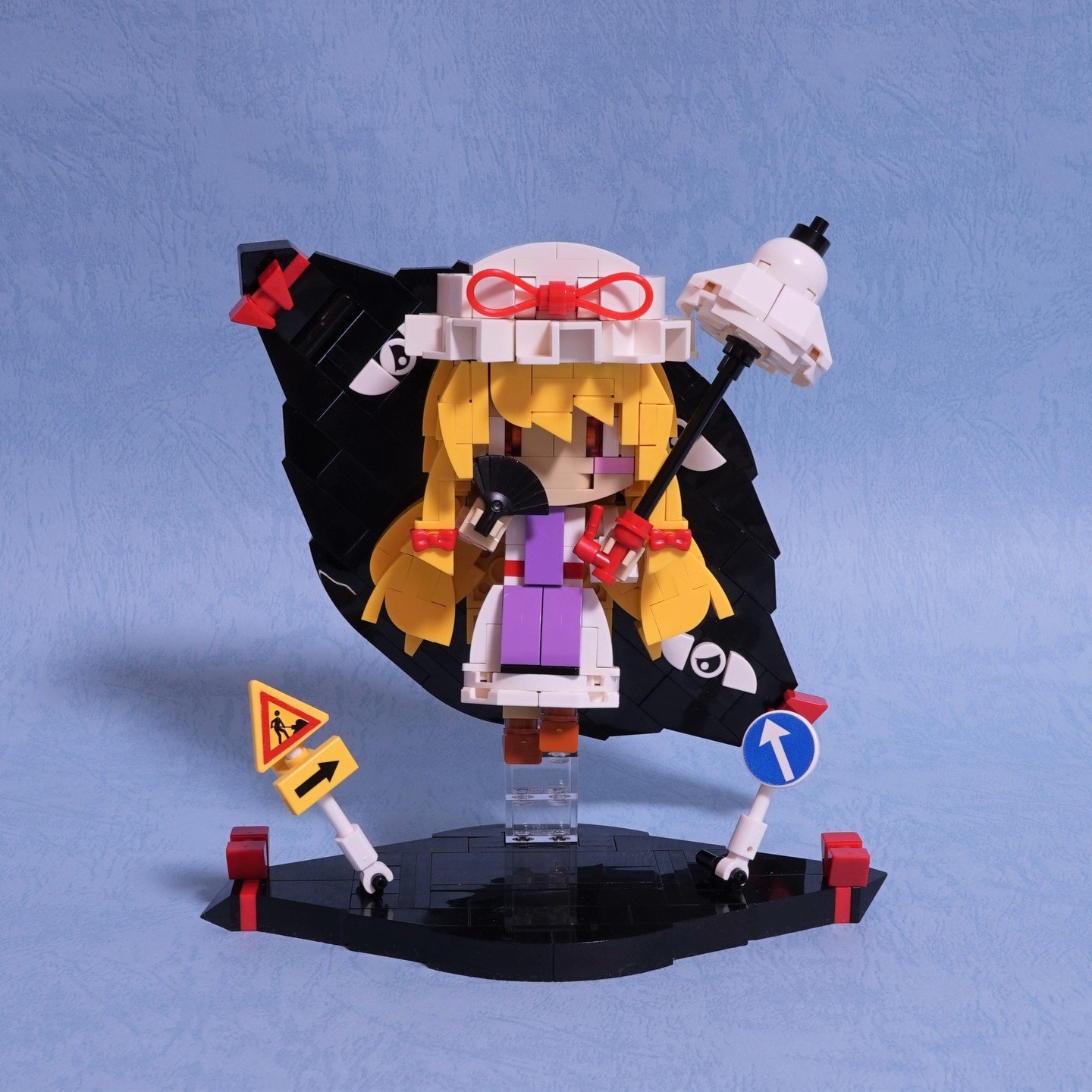

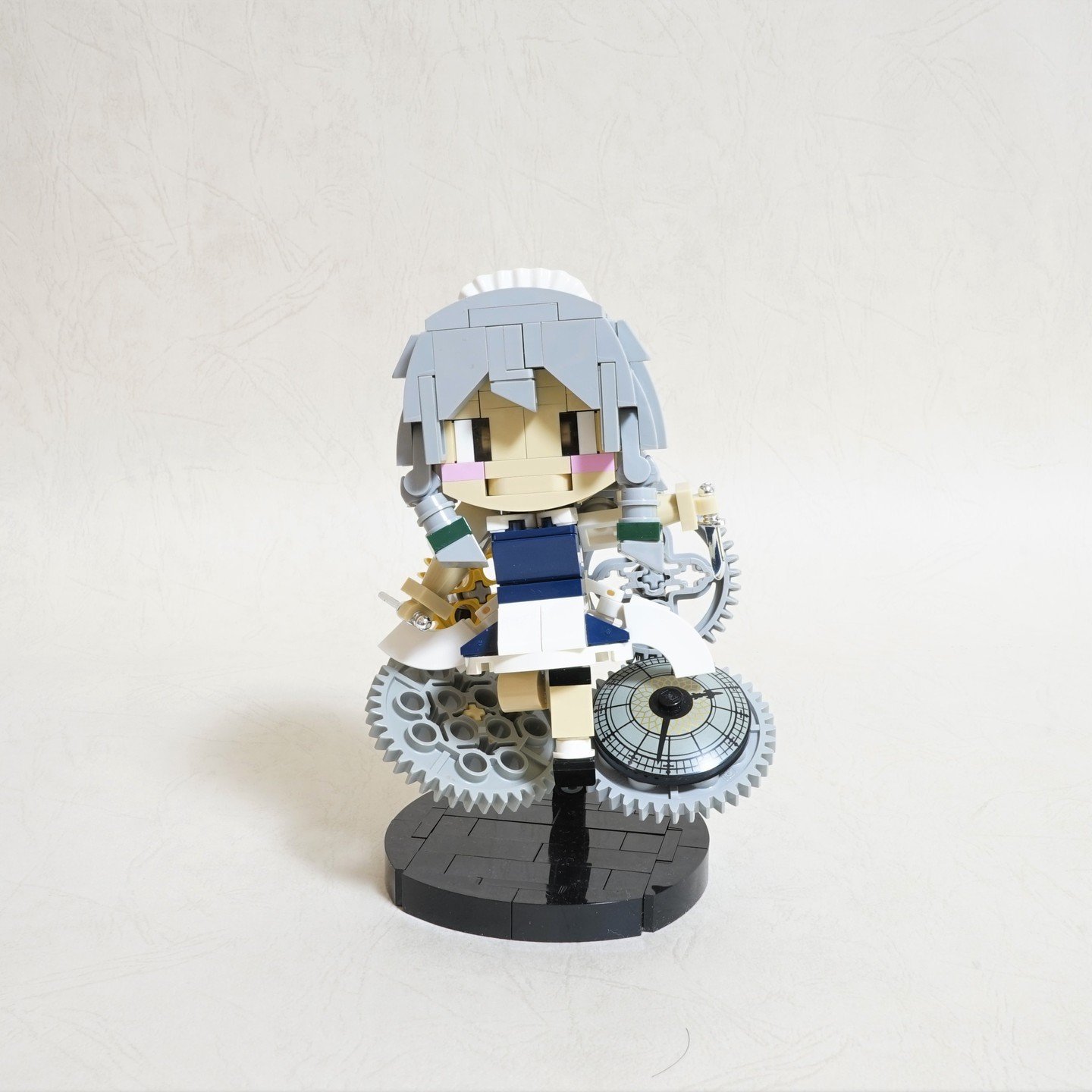
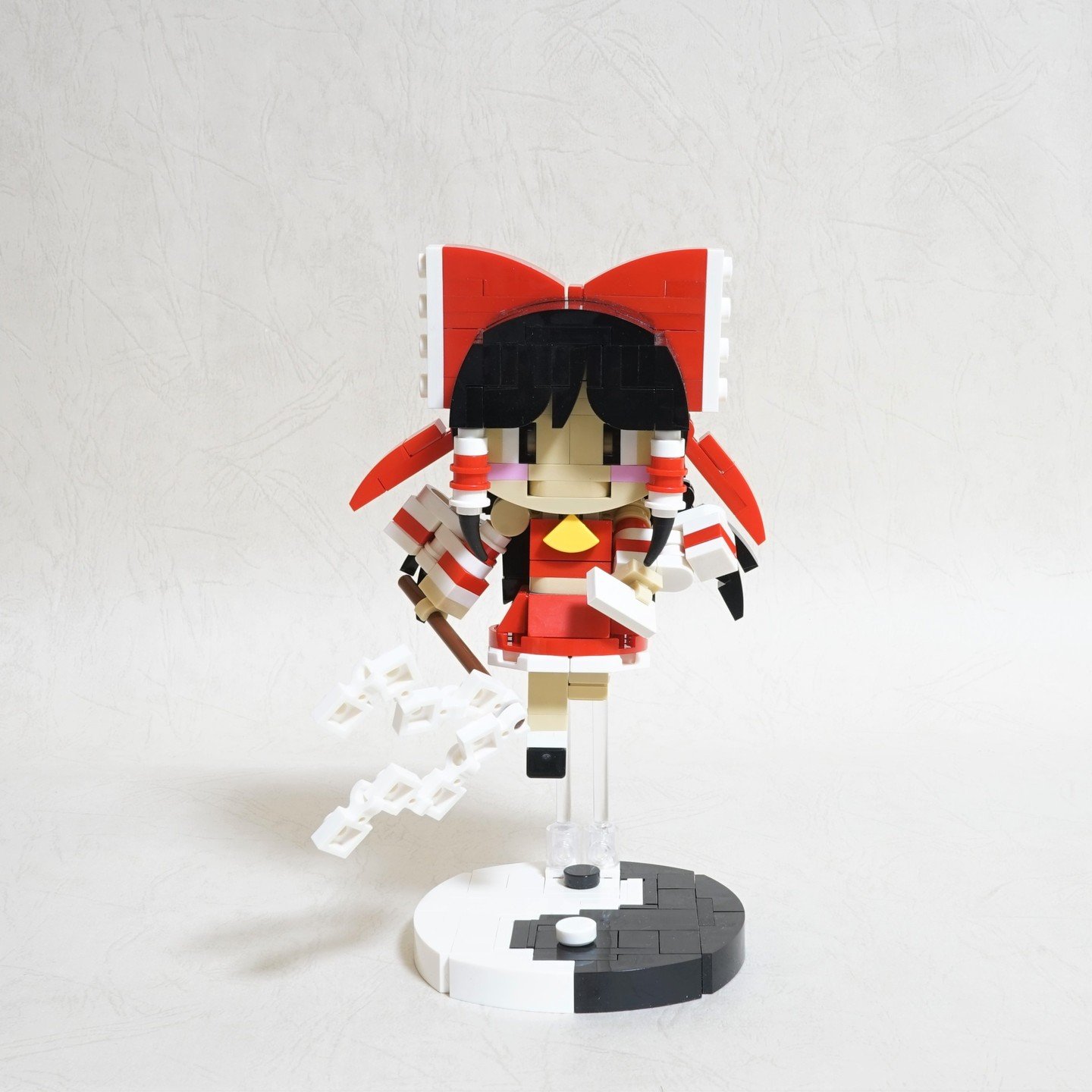
Ted: For me, Mike, I think my favorite chibi figure of yours is "HIMŌTO! UMARU-CHAN" that I shared a picture of earlier in the introduction… But coming in at a close second are girls from Yuru Camp. The photo edit, and the added scene that you built around them really adds to the relaxing, laid-back camping vibe of the anime.
Ted: Mike, I see the oldest post in your Flickr photostream was of this chibi figure on a business card holder in 2013. Was that actually your first chibi LEGO build?
Mike: Before this chibi figure, I had actually built several similar chibi figures. They were built in the same concept since I just started building MOC at that time! This one was the first that I had uploaded to Flickr, and as you can tell I have built and uploaded plenty since then.
Ted: Speaking of your photo uploads, I saw that plenty of your anime pop culture builds were put on display at Taipei Underground Mall. What was the reception like from the public?
Mike: Since the event is held in public spaces for an extended amount of time, I have not found not too much focused information on the internet. Most of the viewers are just passing through the underground mall... But I did find out there was a person who took photos of all of my MOCs and shared them online at a forum that is associated with ACG (Anime, Comic, and Game) communities. I know my MOCs would really only catch the eyes of others who are addicted to ACG cultures. When I learned that they instantly recognized the characters that I had built, and gave additional praise and feedback, that encouraged me to keep building.
One of Mike’s many display cases at The Taipei Underground Mall
Ted: I saw that you both were able to display together at Japan Brickfest (JBF). What was the experience like to finally meet each other in person?
Mike: After I participated at JBF in 2016, I thought Javier would be interested in JBF and tried to invite him to join JBF in 2017. At first I thought it would be hard to take a long trip from Barcelona to Japan, but he still came to join us! Although my English is not good enough to convey everything I want to tell, we still enjoyed sharing our MOCs with each other and talked a lot. It was a precious experience for me. I was really glad that we could meet together!
Javier: A wonderful one, indeed! So good was the experience of meeting Mike that I repeated every year (2017, 2018 and 2019) until COVID came onto the scene and thrashed everything. Back in 2017, I arrived early on Friday, which was the setting up day for the JBF. However, Mike would not arrive until Saturday morning, so I remember myself eagerly waiting for him, my nerves eating away at me; “What I’m going to say to him?” “What should I do?” Haha! I am sure I looked like an overexcited fanboy when we first met.
Ted: Have you attended any other in-person LEGO Conventions, or have plans to in the future?
Javier: Truth is that I have not displayed them anywhere apart from Japan Brickfest. Not a great socializer, I guess X-D. I have been very tempted to attend the Paredes de Coura Fan Weekend, but COVID and schedule issues have prevented me from doing so. Paredes Fan Weekend has also the bad habit of having the same celebration dates as Japan BrickFest, which completely breaks me.
Mike: I joined Skaerbaek Fan Week (SFW) twice in 2016 and 2017 and a convention in Shanghai, China once before. If possible, I would like to attend other conventions in the world! Now I am considering attending SFW again next year. If there will be Brickorea next year, I would also probably try to participate with some friends! Of course, I will definitely attend JBF next year as a builder!
Ted: Are you members of a local LUG (LEGO User Group), or perhaps a virtual one?
Javier: Unfortunately, not, although the idea has crossed through my mind several times. There are several LUG operating in Spain. In particular, the Barcelona area hosts HispaLUG.
Mike: I do not belong to any local LUG at this moment either, but I usually join some local LUG events here. I also attend Japan Brickfest as a builder and volunteer almost every year.
Chibi Building Community
Ted: Javier, when I commented on your photo of Rebecca that I planned to build a chibi figure of my own, you replied; “Yay! Ted joins the chibi gang!” In addition to yourself and Mike (and Moko), who else would you say is currently in the “chibi gang”?
Javier: Well, I am mostly acquainted with builders that post on Flickr. The first ones that come to my mind would be Magmafrost13, Andrés Bevilacqua, Yuichi Sugiyama and DaiYuan. Magmafrost and DaiYuan works are also of special interest, as they also adopted Mike’s chibi frame for use in larger figurines. Special mention also goes to RPHNet, who remains delightfully faithful to the old and rare Moko’s 4-studder and remains very active, especially outside Flickr. There are other less-known builders, maybe not very active in Flickr, like Rya, LazyMaou and MasterBuilderFish. And, of course, my apologies if I missed somebody!
Ted: Of the chibi figures that others in the “chibi gang” have built, which are your favorites?
Javier: Unfair! More tough questions! … I would say Hoppo-tan, by Risz (2018). This chibi is, arguably, my all-time favorite! Simple, recognizable, and overflowing with such much cuteness that I could die of hyperglycemia.
“Hoppo-chan, you are the best!”
Puella Magika Madoka girls, by Mike (2015). Mike’s vast collection of chibis is just mind-blowing, but this squad of Magical Girls, built in old times when snot parts were still quite rare, is a testament of Mike’s amazing skills. Mike is currently updating them, and I constantly bug him to finish them… Come on, Mike! Don’t be lazy! X-D
“Don’t despair, or you will turn into a Lepin Witch!”
And one more. Saber, by Moko (2013). What can I say about “The Man”? All his works are legendary stuff. This old chibi will always enjoy a special spot in my heart, as it is the one that made me fall into the rabbit hole of LEGO chibis.
Mike: For me, I especially like the Kancolle series that Javier built! With their larger scaling, there are many brilliant skills that I could look at all day long. I simply enjoy those beautiful MOCs!
Ted: Javier, In addition to Mike and Moko, are there other builders that have influenced you in the way you build chibi figures?
Javier: It may sound unrelated, but Red Spacecat and Pascal are builders that I admire and that have influenced me the most. Both represent the clean, streamlined way of building that I strive for. Their influence, even if subtle, is present in all my MOC production. Pascal has built quite a collection of slightly taller figures himself, that uses one of the earliest chibi head designs. Then the gijinka (anthropomorphic) version I created of Red Spacecat’s Saratoga spaceship is one of my most beloved chibi figures, especially as the base is signed by the man himself!
The gijinka (anthropomorphic) version of the Saratoga spaceship
End of Part 1
And with that, we will also sign off and conclude Part 1 of our introduction to chibi building and getting to know Javier, Mike, and the chibi building community. Tomorrow in Part 2, we will continue our discussion by taking a closer look at various chibi building styles and the techniques that you can use to make a few figures of your own! We’ll also finally get to that side-by-side comparison of those MOCs that Mike and I both built of the LycoReco girls. See you soon!
Best of BrickNerd - Article originally published December 13, 2022.
Do you know any other chibi LEGO builders that should be highlighted? Let us know in the comments below!
Do you want to help BrickNerd continue publishing articles like this one? Become a top patron like Charlie Stephens, Marc & Liz Puleo, Paige Mueller, Rob Klingberg from Brickstuff, John & Joshua Hanlon from Beyond the Brick, Megan Lum, Andy Price, John A. and Lukas Kurth from StoneWars to show your support, get early access, exclusive swag and more.


